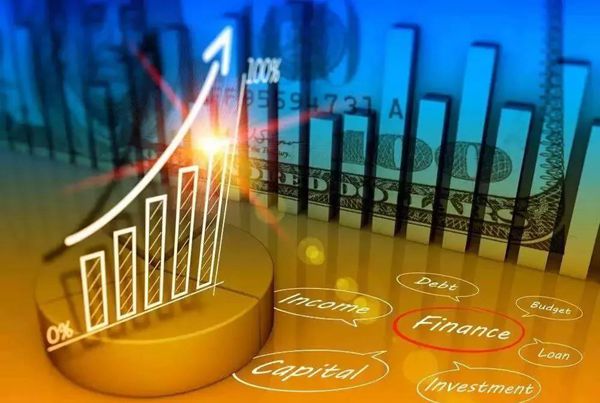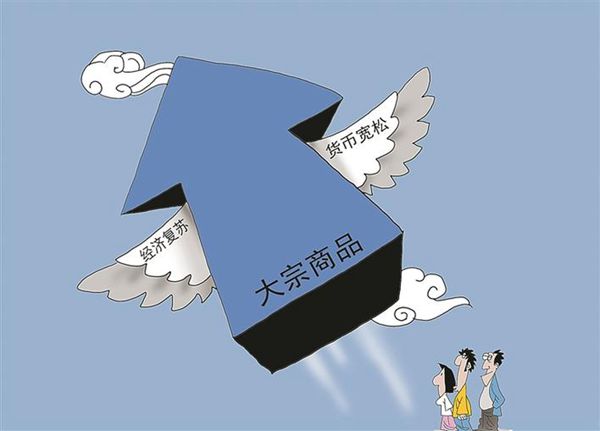Recent coking coal, coke prices led the futures market, some aluminum, tin and other non-ferrous metals, energy chemicals and some agricultural products and other commodity prices also have "good" performance, some commodity prices rushed to the high.
This rally in commodities has a lot to do with COVID-19. From the demand side, the promotion of COVID-19 vaccination, the unwinding of the European and American economies, and the launch of unprecedented fiscal rescue policies, the market expects that the global economic recovery will drive the recovery of commodity demand. On the supply side, the spread of the epidemic and epidemic prevention measures are likely to lead to bottlenecks in the supply of bulk commodities and logistics. From the perspective of market speculation, under the environment of zero interest rate (negative interest rate) and the flood of US dollar liquidity, market risk preference is boosted and commodity speculation is encouraged. In addition, the prospect of new energy development and short-term emergencies to some commodity supply and demand disturbance, also exacerbated the market volatility.

Overall, the recent part of the base metal, coking coal (coal), food and other commodity prices higher, with the global economic data synchronization in major economies slow to clear contrast, in addition to the epidemic factors not eliminate, and added, such as environmental protection, coal mine accident, some factors, such as extreme weather, a disturbance to supply related goods.
From the trend, short-term commodity prices to maintain high operation, but lack of medium - and long-term support.
In the short term, the factors supporting commodity prices remain high. On the one hand, international loose financial conditions will continue. Recent data showed that the spread of mutated viruses was a drag on the global economic recovery, particularly in the service sector. For Europe and the United States, the service sector is an important employment-generating sector. If the epidemic continues to spread, the slow recovery of the job market will make major central banks in Europe and the United States cautious in policy adjustments. Supply bottlenecks, on the other hand, will continue to plague the world. As the spread of mutated virus continues to impact the global supply chain, the supply of some bulk commodities is blocked, high freight and other conditions may continue.
But in the medium to longer term, commodity prices face several constraints.
First, commodity prices are high. At present, the global economy has not recovered well, and the mutated virus may slow the pace of the global economic recovery, but some non-ferrous metal prices have risen to 10-year highs, international corn prices are higher than seven years ago. The rising prices of energy and industrial raw materials are good for upstream enterprises, but increase the production costs of some downstream manufacturing enterprises. Once enterprises are unable to adapt to the rapidly rising costs in the short term, they may fall into business difficulties. In addition, the rising prices of energy commodities and the shortage of some raw materials will eventually be transmitted to the consumption end, leading to the emergence of inflationary pressure in the US and European economies, which will to some extent weaken the welfare of low - and middle-income groups and hinder the recovery of domestic demand.

Second, supply-side constraints are gradually easing. Most of the factors driving commodity prices higher are short-term. As vaccines continue to be promoted around the world, the impact of the epidemic on the economy will gradually ease, commodity production will resume and logistics and transportation will be unimpeded, the balance between global supply and demand is expected to gradually recover.
Third, the gradual normalization of monetary policies in the US and Europe. In late August, the Fed chairman said tapering could begin this year; Recently, the inflation data published by the Eurozone is higher, and the attitude of the relevant officials of the European Central Bank is obviously "turning eagle". These information all point to the overall policy of the Federal Reserve and other central banks to "retrenchment" direction. Despite the recent rebound of the epidemic, the easy liquidity environment in the market will not be tightened soon, but in the medium to long term, the normalization of policies in Europe and the US will restrict the space for speculation in commodity and other asset markets.
Fourth, the effect of ensuring supply and price stability for domestic goods was gradually released. In view of the negative impact of the continuous rise of commodity prices on the production and business activities of some middle and downstream enterprises in China, the domestic timely introduction of the "combination fist" of commodity supply and price stabilization policies to "cool down" the market. At present, the policy effect is initially effective, the market as a whole shows a steady trend of slowing down, and investors' expectations tend to be rational.

